Once agreement has been made with the suppliers, mainly through the purchase, the next step is for the arrival of materials on site. With this, it is best to take into account how the materials and components will be transported to the construction site.
Although transportation of materials is a key step in the acquisition of the necessary materials, it has its limitations and negative effects to the construction project. Therefore, it is best that you determine these limitations and effects so that you can develop actions necessary to limit the damage they can make.
Limitations and effect of transportation on materials and components
Limitations
Limitations of transportation are circumstances that restrain the time or quantity of materials being delivered for the construction project. Listed below are some key factors that can limit or restrict transportation of materials.
 |
 |
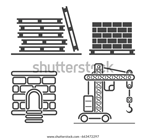 |
 |
| Traffic Conditions – Most likely, the transport of materials will be through roads and highways going to the construction site. Although there are instances where air or water transport is viable, it is through land transport that is most economical. The downside is that it is subjected to various road and traffic conditions that can delay delivery. | Weather Conditions – Weather can also slow down the transport of materials. Inclement weather such as heavy rain and snow and heat waves can slow down or even halt material delivery as it can be unsafe to travel with heavy materials in those conditions. | Quantity – There is only so much that you can procure in one delivery as there is only a limit to the number of materials the supplier can deliver. This can be due to a number of factors, like the size of the material itself and the weight and height limit of the transport vehicle. | Costs – Economic changes for the materials itself, fuel price, maintenance of transport vehicles and other relevant factors can influence the total cost of delivery. Another limitation is that construction projects operate only with a limited and predetermined budget. |
These limitations can affect the materials and components being delivered. In turn, this can also affect the whole construction project. Examples of effects of transportation to materials are seen below:
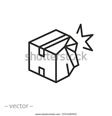 |
 |
 |
 |
| Decay or damage in materials Rough weather and traffic conditions can result to presence of degradation and damage to materials. For instance, bumpy roads can cause deformation of some materials (e.g. sheet materials) that can render them unusable when delivered. |
Poor quality of materials Even though decay or damage did not occur in materials delivered, they may exhibit poor qualities as time passes. For example, due to humidity during transport, timber can expand from its normal size. This can compromise the structural use of the timber as it can shrink down if it is exposed in a less humid condition. |
Loss of materials Suppliers may lose the materials they were delivering when unfortunate events such as theft or accidents occur. Although in these cases, the supplier may provide a new set of materials, there is also a loss of time when the materials should have been on site already. |
Unavailability of materials Granted, loss of materials happens rarely. What happens more often is that when materials delivery gets delayed, they may become unavailable when they are already needed on site. Sometimes, due to damage or decay in materials, there are not enough materials to use to carry out construction work. |
All of these can contribute to the delay of the construction project. Without the materials, or if the materials present do not comply with quality standards, workers cannot perform construction work, putting the project into a standstill. These can cause financial damage to the project as additional time means additional costs, such as compensation for workers, utilities and equipment hire. Safety can also be compromised since workers would have extended time exposed to hazards, increasing the risk of harm. Contractual obligations may also not be met, specifically project schedules and deadlines. Therefore, it is important to take action to be able to minimise the damage to the project.
Taking actions to limit potentially damaging circumstances
Actions to take to help limit the damaging circumstances brought about by the limitations and effects of transporting materials include the following on the next page.
Resource scheduling
Resource scheduling deals with assigning resources, such as the materials, efficiently to the different tasks needed to complete them. Creating a resource-oriented schedule means the date and time of completion of tasks depend heavily on the availability of materials and workers for the said tasks. Therefore, a delay in delivery of specific tools means additional waiting time for the materials.
With this, it is apparent the availability of materials plays a big role in keeping the project on schedule. Creating a resource schedule will help you plot the materials and schedule their transport in advance. You can refer to the resource schedule and update the schedule when something arises that can affect the delivery of the materials. With this, no time is wasted as you can plan out what you can carry out while the material is yet to be delivered.
Consultation with supplier
It is very important to always consult with your suppliers every now and then. You should contact them to confirm and update the delivery schedule and communicate with them when issues appear. For example, if a cyclone is brewing that may hit the vicinity where your construction site is, you may notify the supplier and plan on what to do.
You should also keep communication lines open so that when concerns arise on their end, you may get the update as soon as possible. Always check your email for updates on the status of the materials and the delivery.
Be updated with current events
As noted in the previous discussions, changing circumstances can affect the delivery and transport of the materials you need. To help you anticipate these circumstances, you should keep yourself updated with what is happening in your area, as well as the regions where the materials would come from and the route it will take.

Once the procured building materials have been delivered into the site, they must be checked against the standards and requirements specified in the construction specifications. A more detailed inspection of the delivered materials and products can be done once all purchased materials have arrived on site and have been consolidated accordingly. It is important that as the procured materials arrive, they are spot-checked.
One way of assuring that the materials delivered are adequately checked is by using a delivery sheet. As the site manager, you either assign a point person or simply be the one who will be in charge of receiving deliveries, checking their completeness, and keeping a record. Whoever will receive the deliveries must be briefed about the procedures in receiving and inspecting deliveries from the supplier.
Here are the steps to be able to check delivered materials once they arrive on site.
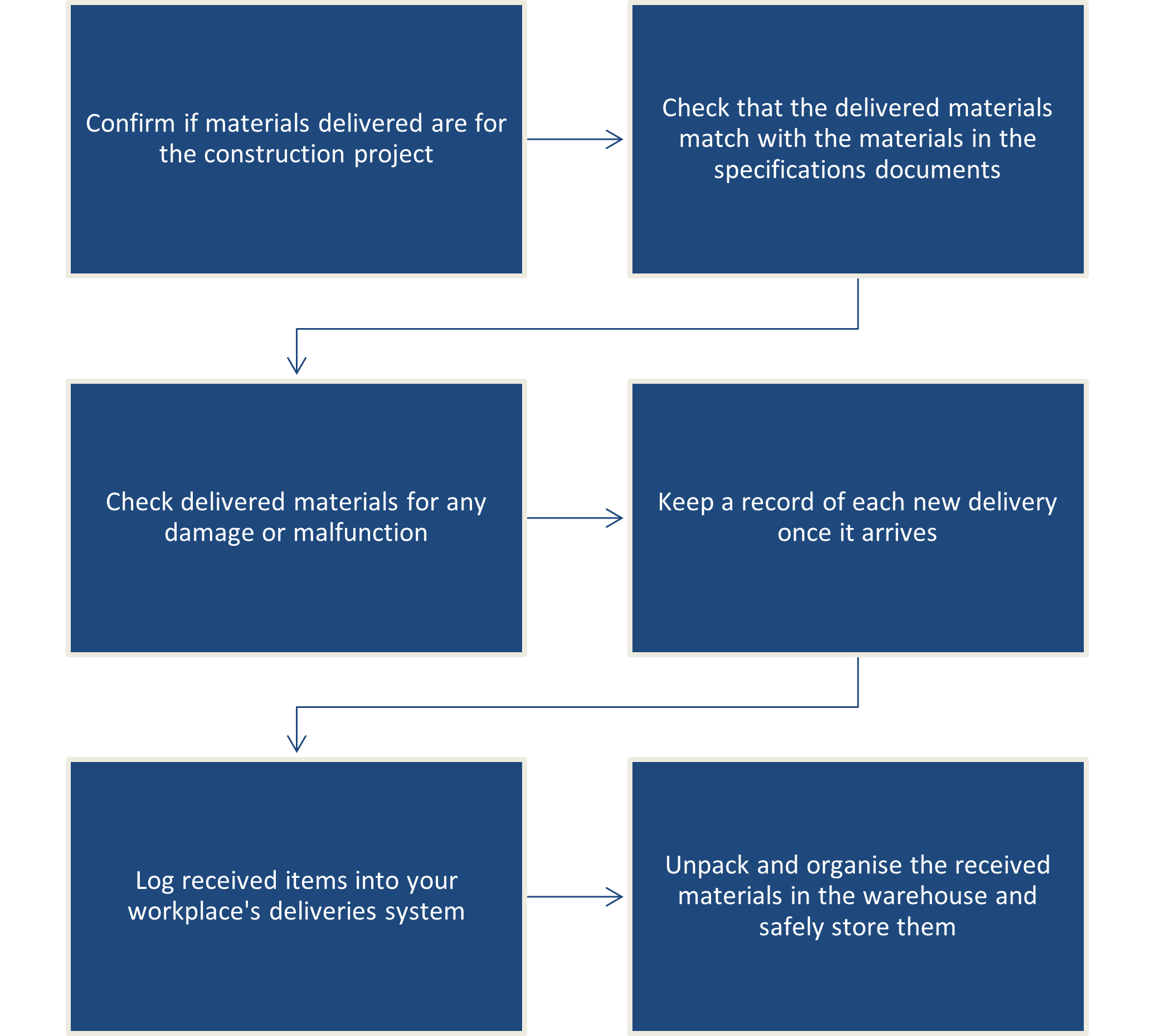
Confirm if the materials delivered are for the construction project.
Firstly, check and confirm if the materials should be delivered on site. Scan their delivery order to verify if the details match with the information of the project, the company or your own (if functioning as the representative of the project). You must also check if the location is correct, especially for companies with multiple projects; ensure that all delivered materials are intended for you or your construction project.
Check that the delivered materials' quantity and description match with the materials in specifications documents.
Once the deliveries are received, you must ensure that they match the quantity and description found in documents with material specifications, such as the purchase order, material invoice, building plans, etc. That way, should there be discrepancies in the quality and number, you can notify the supplier immediately.
Check delivered materials for any damage or malfunction.
Whoever will be responsible for receiving the deliveries must do a spot check on the quality of the delivered materials. If possible, check the delivered materials for any defects or any sign of breakage. It must be assured that the materials are as described on the PO.
Make sure to record the damage on the consignment note, so that the supplier will be made aware of this and you can discuss the issue with them promptly.
Keep a record of each new delivery once it arrives.
Make sure to indicate the following important details:
- Date and time of arrival of the materials
- Names of people responsible for the deliveries
- Quantity and description of materials checked off against the purchase order
- Discrepancies noted
- Name of personnel responsible for performing checks
Log received items into your workplace's inventory deliveries system.
Once possible, the received materials must be logged into your organisation or workplace’s inventory or warehouse management system. This will help you and your workers track and retrieve the materials easily when they are needed on site.
Unpack and organise the received materials in the warehouse. Store them securely in your workplace’s storage space.
To ensure that no items get damaged or lost, the received materials must be stored immediately, but safely, in their respective storage areas.
Once materials have been delivered into the construction site, there are three things you should now consider:
 |
 |
 |
| Storage space | Safe handling of material | Security and protection |
It is important to consider these three to make sure that materials on-site, when not yet used for construction, are handled and kept properly and safely. Therefore, in this section, you will learn how to allocate on-site storage space, supervise safe handling of materials and ensure the security and protection of materials.
Allocating on-site storage space
You should provide enough storage space for the various materials kept on site. Since there are times that materials not yet needed arrive on-site, allocation of on-site storage space for building materials must be planned properly and beforehand.
In allocating storage space for materials in the construction site, you should consider the following below to provide the adequate necessary space:
- Physical characteristics – you should consider the dimensions, shape and weight of the materials in providing space for them. You do not want to make the simple error of materials not fitting into the allotted storage space, as this may compromise safety (when materials are exposed to workers), quality (materials are not stored properly) and costs (damages to materials render them defective).
- Location and access – You should also take the location of the storage space into account. Ask yourself: does the location give enough room for materials in a way that they are easily accessible by workers and equipment when needed? Usually, storage areas are either near the delivery area and the work area or another area that workers have easy access to. Since assorted materials are used in construction, there are instances that there are also multiple storage areas that are near the relevant work areas. In these cases, you should consider if those areas have enough space for your materials.
- Safety – You should also take into consideration the safety of workers when allocating storage space for materials. As mentioned, inadequate storage space may result in materials being exposed to the site and its workers. In turn, this brings a hazard with the risk of harm. For example, steel rods sticking out of their storage areas can bring the risk of physical injury (e.g. being hit or stabbed by the rod).
- Project Plan – You should also consult project plans, specifically the resource or materials schedule which is a project schedule wherein the tasks are assigned with the estimated materials and their time of delivery and arrival on-site. With this, you can approximate the adequate size of space since you can predict the total amount of materials arriving to the site.
It is important to note that providing a huge amount of space is not the best solution. Space is limited in the construction site and space is important for the other, usually more productive, areas of the site. Compromising that space just for material storage can hinder productivity and compromise safety. Therefore, you need to allocate just enough for storage space so that materials have room to be kept while they are on stand-by in the construction site.
Supervising safe handling of materials
Safety measures must be observed in the workplace during actual construction and installation, but also, and more especially, during handling of the materials. Mishandling the materials does not only mean potential damage to the building products or components themselves, but also potential damage to the lives of everyone involved in the construction project.
The following are some of the most important safe handling measures that must be observed in your worksite:
- Properly secure all materials stored in tiers. Heavy material such as pipes, steel beams, poles, etc. can tilt or slide if not stacked or blocked appropriately.
- Keep flammable and combustible materials in fire-resistant containers
- Determine and publish in visible and prominent areas the maximum safe load limits of floors where materials are stored. Make sure to not exceed those limits.
- Maintain clear passageways and aisles when moving materials.
- Construct ramps or walkways between work areas on different levels to minimise the occurences of accidents and spills.
As the site manager, you are responsible for having sufficient knowledge about safe handling of materials at the site. It is your responsibility to disseminate all information and aid in providing training on how materials are to be handled and stored safely. State or Territory regulations and WHS agencies such as Safe Work Australia may already specify these measures to be taken in handling materials. Still, a readily available document that elaborates the different safe ways of handling various building materials and components should be available, so workers can easily access and review the document when they feel the need to.
Material handling equipment
The storage and handling of the received materials require the use of manual and mechanical handling equipment.
Material handling is defined as the carrying, moving, or lifting of materials, components, products or any other article used in construction. It can be done either manually or with the help of a mechanical plant. Because manual material handling poses health and safety risks such as musculoskeletal disorders and the risk of slips or falls, it may sometimes be necessary to use equipment to move or carry the materials.
The equipment used in mechanical material handling come in three common types, based on how they function.
 |
 |
 + +  |
| Transportation Equipment/Devices | Lifting and Lowering Equipment/Devices | Combination of Transport and Lifting Plus Lowering Devices |
Transportation equipment/ devices
These handling equipment are responsible for horizontal transportation or movement of building materials. Industrial trucks and other similar vehicles belong to this classification. Other equipment like wheelbarrows and hand trucks also help transport devices, although they need a greater amount of manpower in moving products, as compared to a truck.
Tractors and trailers also aid in horizontal transport, have great flexibility and offer much convenience.
Lifting and lowering equipment
Lifting and lowering equipment aid in vertical movement of construction materials. Essentially, when something needs to be lifted at a certain level, then it is the lifting and lowering equipment you must use. Cranes and hoist are the most common equipment used in lifting and lowering load, building materials or products.
A tower crane is a type of crane that is used to lift concrete, steel, large tools and various building materials.
Combination of transport and lifting plus lowering devices
A conveyor is the most common equipment that can be used to transport materials horizontally and lift a material from a vertical distance. Conveyor systems in construction vary according to their purpose.
Here are some of them:
- Lightweight scaffold-mounted conveyors
- Basement excavation conveyor
- Construction site conveyor
Meanwhile operational features comprise of the parts and components of the material handling equipment relating to its safe and effective use or operation. Features can include:
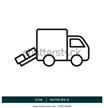 |
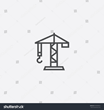 |
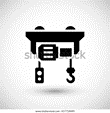 |
|
Trucks Manual or power-lifted rear bed to carry and transport materials horizontally Trailers to transport materials safely from external elements (theft, weather conditions, dirt and debris) |
Cranes Stabilisers (for mobile cranes) or support frames (for static cranes) to ensure structural strength of cranes Cable and hook/hoist to be able to carry and transport materials from one place to another |
Material Hoists Vertical support to ensure stability and structural strength Large platform with guardrails to be able to transport large amounts of materials while minimising fall of materials |
These different equipment and devices have to be operated in accordance with the safety requirements prescribed by your State or Territory. Such requirements include obtaining relevant licenses and competencies to operate the equipment legally and safely.
Ensuring the security and protection of materials
Apart from allocating space for materials, you should also protect and secure the materials to make sure the risk of damage and theft would not occur. There are many considerations in storing various building materials, depending on their different properties as you have learned from Section 1.2 of this Learner Guide. Therefore, you should ensure that security and protection is provided appropriately.
Listed below are common materials and ways to protect and secure them.
Blocks
Blocks must be delivered to the site of construction, either loose or strapped in timber pallets. They should be covered by a protective sheet while staked in columns, with a recommended maximum height of eight courses.
Bricks
Given the nature of bricks, they are to be transported from the storage space using a forklift as they are heavy and taxing to manually move. Bricks must be stored on level, dry ground and covered with a protective sheet to prevent the risk of degradation from moisture and other weather elements.
Cement
Make sure that the storage area for cement is dry as water and air moisture may let the cement set. Cement bags may be stacked together onto a timber pallet and should be covered. If bagged cement comes in larger numbers, it would be best to have its own storage space that is watertight and fire resistant.
Corrugated and Similar Sheet Materials
These building materials must be stored flat on level, dry surface, and covered with protective polythene sheet to ensure protection from corrosion and damage. They should not be deformed when stored to ensure that there is no compromise in the quality and form.
Drainage Pipes
Just like bricks, drainage pipes can be delivered loose or in plastic-wrapped packs. These should be stacked horizontally with their ends reversed in alternating rows.
Roofing Tiles
Much like blocks and bricks, roofing tiles must be delivered either loose, or in unit loads on timber pallets. These materials must be stacked vertically with a maximum of six tiles in height. All tiles at the end of every row should be laid flat.
Timber and Wood
Usually, wood and timber should be stored and covered in a scaffold rack. Take note that timber of the same dimensions should be grouped together and be separated from timber of other sizes.
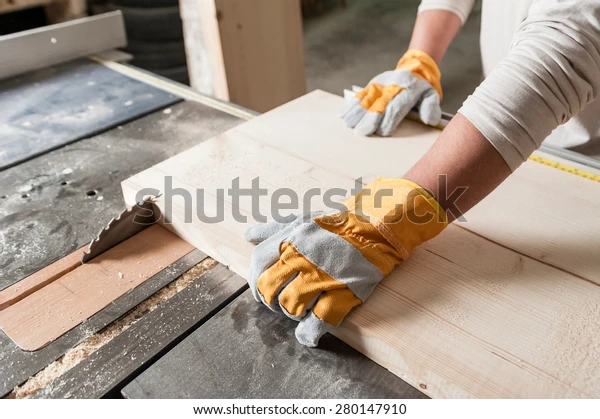
Meeting manufacturer specifications
With the three subsections discussed, all of them need to meet the manufacturer specifications of the material. Manufacturer specifications is a document that provides all the relevant information regarding a specific material or product. These specifications (including proper handling and storage), if followed and met, will ensure materials maintain their properties and qualities when they are used for construction. Therefore, you should consult, review and meet manufacturer specifications when allocating on-site storage space, supervising safe handling of materials and ensuring the security and protection of materials.
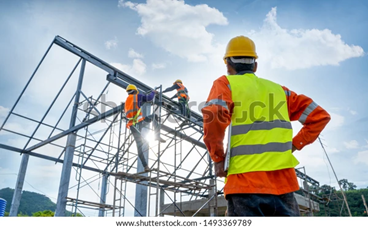
There are a number of ways by which you can inspect all delivered materials. These procedures and techniques must be consistently observed and documented, as part of your project’s quality control and assurance process. Inspecting the quality of the construction materials is a must to ensure that you stay within the budget and time allocation by not repetitively spending on sub-par materials and work quality.
Quality control inspections generally revolve around the construction materials, plant (including equipment and tools), and labour. Inspections must be done to ensure that construction materials are of quality and do not have any defects and damages.
Defects are general deficiency in the construction materials because of the inadequacy in the design or manufacturing of the materials. Damages, on the other hand, are physical deficiencies that are usually caused by external factors (e.g. exposure to weather elements, physical deterioration, wear and tear). Damages can be easily noted through visual inspection as they come through the form of:
- cracks
- scratches
- dents, irregular bends and other malformations
Inspection Processes
Materials
All materials delivered onsite must be fit to use for construction. It is the supervisor’s responsibility to make sure that the materials are free of defects and are standard-compliant prior to use.
Checking for material defects
Materials must be examined for any naturally occurring and/or manufactured defects prior to installation. As soon as the materials arrive on site, you must inspect them for any damages that may have occurred prior to or during transportation. Visual inspection procedures are usually appropriate for initial material checks.
If the materials are found to be defective and the extent of damage renders the materials unusable, the materials should be sent back to the supplier for replacement. However, if the defect is minor and does not compromise the function of the material, you may choose to record this and relay this information to the supplier to reach a resolution.
Comparison with specifications and standards
Materials must also be examined to check whether they meet contract document specifications and quality standards.
You need to look at the documents that serve as evidence of suitability of the materials. For example, for steel materials, the supervisor may look at the Mill Test Certificate (MTC) or Mill Test Report (MTR) issued by the manufacturer and compare the details with the requirement. MTCs and MTRs provide information on the properties of a product and its compliance with the technical specifications. They may also indicate results of appropriate testing done on a product before it was delivered on site.
Some inspection activities would also require relevant testing procedures to be done to properly assess the quality of material. Checklists would often have items referring to testing procedures for materials.
Thus, you must also be familiar with various material testing procedures. These tests quantitatively determine whether a certain material meets the standard requirements. Different tests apply for different materials.
Below are common testing procedures for different construction materials:
|
Material |
Tests |
Assessment for |
|
Bricks |
Compressive Strength Test |
Compressive strength |
|
Water Absorption Test |
Water absorption |
|
|
Efflorescence Test |
Presence of alkalis |
|
|
Hardness Test |
Hardness |
|
|
Size, Shape and Colour Test |
Uniformity |
|
|
Soundness Test |
Soundness |
|
|
Structure Test |
Brick structure |
|
|
Concrete |
Slump Test |
Consistency |
|
Concrete Cylinder/Cube Test |
Compressive strength |
|
|
Rebound Hammer Test |
Compressive strength |
|
|
Penetration Test |
Compressive strength |
|
|
Pull Out Test |
Compressive strength |
|
|
Ultrasonic Pulse Velocity (UPV) Test |
Compressive strength |
|
|
Sand |
Bulking test |
Increase in volume due to moisture |
|
Silt test |
Cleanliness of sand sample |
|
|
Steel |
Tensile strength test |
Tensile strength |
|
Brinell Hardness Test |
Hardness |
|
|
Radiographic testing |
Cracks and defects |
|
|
Ultrasonic Testing |
Cracks and defects |
|
|
Timber |
Oven dry testing |
Moisture content |
|
Moisture meter |
Moisture content |
Storing materials safely
You should also provide processes on how to store materials safely in the construction site. Providing safe storage will ensure protection of the materials from damage and defects. As discussed in the previous section safety also means the safety of the workers from hazards brought about by materials incorrectly stored.
You should also make sure that the transport of materials does not also harm the workers and the materials as well. As suggested in the previous subchapter, you should provide mechanical material handling equipment to your workers to help ensure safe handling of materials.

Once defects and inconsistencies with the desired quality of the construction materials are identified, it is essential that the relevant persons be made aware of such lapses. For action to be taken immediately, the appropriate authority must be informed right away. In this case, it is you, the site manager, who must be informed of such valuable information. If another point person(s) was assigned to do or oversee the inspection, then they are obliged to report back to you the findings on inconsistencies of quality of the building materials, should there be any.
The next person to communicate with is none other than the supplier or manufacturer. On instances when the quality deficiencies have been spotted and identified the moment the supplier is no longer present at the site, they should be informed promptly by any means accessible to you.
Non-Conformance Report (NCR)
It is necessary to provide an official report to provide all relevant persons the valuable information regarding the quality of the building materials received on site. In the event that there are issues in the quality of the delivered building materials, it is best to accomplish a non-conformance report.
A non-conformance report details the item or items that are to be reported as not meeting the standards or sub-par. Measures on how to prevent issues and come up with potential resolutions can also be provided in a non-conformance report.
Basically, the non-conformance report must be accomplished with the following information:
- Which materials/items are being reported as non-conformant?
- Why does it not meet the specifications?
- What can be done to rectify it?
- What corrective action has been taken or needs to be taken?
- Who are the key persons involved in the non-conformance?
The non-conformance report is usually issued by the project consultant or site manager. Your report must provide clear and substantial evidence and information, such as from inspection reports and testing results, to support your claim. Once the appropriate corrective actions are taken, the report will be closed and will serve as basis for further training either on your end or on the suppliers’.
Here is a sample Non-Conformance Report Form
Building and construction projects are considered a high-risk industry in terms of health and safety. Construction work is one of the most dangerous occupations wherein almost all aspects of the work can pose a risk of harm to people on site, including times when accepting and storing delivered materials on site. Therefore, it is vital that relevant people involved in these tasks are instructed of the established workplace safety requirements of the project. This will help them become aware of the hazards and risks on site and how to conduct work safely.
Work health and safety legislative requirements
WHS legislation covers all the WHS acts and regulations enacted by the States and Territories of Australia. The WHS Legislation is comprised of the Work Health and Safety Act 2011 and the Work Health and Safety Regulations 2011, as well as the Codes of Practice created under the Act and Regulation.
Work health and safety act 2011 (whs act)
The WHS Act defines the broad policies regarding health and safety standards that should be apparent in the workplace, promoting the employees’ welfare, health, and safety. The 2011 Act aims to harmonise the jurisdictional WHS laws so that work health and safety is nationally consistent between States and Territories, as they enact and enforce them under their jurisdiction.
Work health and safety regulation 2011 (whs regulations)
The WHS Regulation 2011 is a set of regulatory guidelines stemming from the WHS Act 2011. The regulation sets out various requirements to be met with regards to a wide range of matters relating to work health and safety, from general risk and workplace management to specific work health and safety provisions on hazardous work, construction work, and hazardous chemicals, among others.
Codes of practice
Codes of practice are not legislation, but rather a practical guidance material discussing how to comply with legal duties under the WHS legislation. They address particular issues and might not cover all the hazards or risks that may arise, although regulations tend to be more formal as they are under the law.
Codes of practice come with different copies, discussing various aspects of the general workplace and workplace safety and the criteria and procedures to be followed in order to achieve the standard set forth by the WHS Act and Regulation.
The Construction Work Codes of Practice, in particular, lay out the general standard for work health and safety in building and construction work.
As an overview, the Construction Work Code of Practice discusses requirements on:
- Specific duties related to construction work
- The risk management process
- Safe work method statement
- WHS management plan for construction projects
- Information, training, instruction, and supervision
- General workplace management arrangement
Take note, though, that since Codes of Practice are a part of the Model WHS Law framework, they may vary between States and Territories as noted before. Still, for the most part, the scope of these Codes of Practices should be consistent.
As work health and safety legal requirements are enacted through States and Territories of Australia, they have their own WHS legislations that cover their jurisdiction. You should review them appropriate to the location of your construction project. To help you with this, the table on the next page provides the WHS Act, Regulation, Regulator (statutory body) and the Codes of Practice of the different States and Territories with their corresponding links online.
|
State/ Territory |
WHS |
Codes of Practice |
||
|
Acts |
Regulations |
Regulator |
||
|
Commonwealth |
||||
|
Australian Capital Territory |
||||
|
New South Wales |
||||
|
Northern Territory |
Work Health and Safety (National Uniform Legislation) Act 2011 (NT) |
Work Health and Safety (National Uniform Legislation) Regulations (NT) |
||
|
Queensland |
||||
|
South Australia |
||||
|
Tasmania |
||||
|
Victoria |
||||
|
Western Australia |
||||
Duty of care
Everyone involved in construction work has health and safety duties in the workplace and when carrying out work. Specific duties for persons involved in construction will be detailed in the discussions that follow.
Persons Conducting a Business or Undertaking (PCBUs)
A PCBU has a duty of care, or a legal obligation to ensure the health and safety of:
- workers, while they are at work in the business or undertaking
- other persons who may be affected by activities conducted as part of the business or undertaking (e.g. visitors)
Specifically, PCBUs are required, so far as reasonably practicable, to ensure the:
- provision and maintenance of a safe work environment and systems of work;
- provision and maintenance of safe plant and structures, and their safe use, handling and storage;
- provision of accessible and adequate facilities (for example access to washrooms, lockers and dining areas);
- provision of any instruction, training, information and supervision to ensure protection from harm caused by work carried out as part of the business or undertaking;
- monitoring of workers’ health and conditions at the workplace; and
- maintenance of any accommodation owned or under their management and control to ensure the health and safety of workers occupying the premises.
Take note that there may be, and usually are, multiple PCBUs handling the same task or responsibility, such as contractors and suppliers. When there are multiple PCBUs for the same activity, it is best to regularly consult, coordinate and cooperate with each other to perform your duties in relation to the same tasks.
When entering contracts, PCBUs must clearly communicate WHS policies and procedures and carefully review the terms and conditions of the contract in order to address issues relevant to health and safety. PCBUs must remember that while work health and safety responsibilities may be shared, these responsibilities cannot be transferred to another person.
Officers
Officers have a duty to ensure that the PCBU fulfills any obligations they have under the WHS Act.
Officers can do this by:
- possessing substantial knowledge on WHS matters
- applying risk management processes to the PCBU’s operations
- ensuring that the PCBU has appropriate systems of work in place
- assisting in monitoring and evaluation of WHS management processes
Workers
Workers in construction include direct employees, subcontractors and employees of subcontractors, employees of labour hire companies and apprentices. In compliance with the WHS Act, workers must always:
- take reasonable care for their own health and safety;
- take reasonable care their acts or omissions do not adversely affect the health and safety of other persons;
- comply with any reasonable instruction that is given by PCBUs to allow workers to comply with the WHS Act; and
- cooperate with any reasonable policy or procedure relating to health and safety at the workplace that the PCBU has notified workers of.
Other persons
Other persons at the workplace, such as statutory authorities, certifiers, inspectors and visitors (e.g. owners and stakeholders), have a duty to:
- take reasonable care for their own health and safety
- take reasonable care their acts or omissions do not adversely affect the health and safety of other persons, and
- comply, so far as is reasonably practicable, with any reasonable instruction given to them by the PCBU.
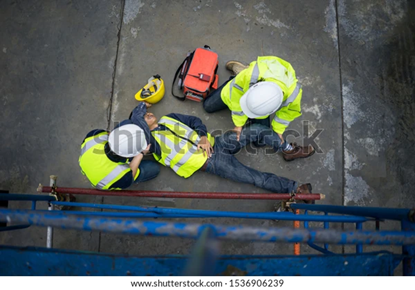
Risk management process and hierarchy of control
The WHS Regulations require duty holders to manage the risks in the workplace, including the materials used in the construction. Proper risk management involves the following steps:
- Hazard identification – As the name suggests, this involves identifying all hazards found in the construction site.
- Risk assessment – Assessing risks means evaluating the potential consequence and likelihood a hazard could cause to people.
- Risk control – Controlling risks includes proper implementation of control measures to be able to minimise risks, if not eliminate them, with the hierarchy of control as a guide.
- Control review – This involves monitoring and reviewing control measures’ effectiveness, as well as changing or removing control measures if necessary.
Hierarchy of control
Part of managing risk involves controlling the risk using control measures to help minimise, if not eliminate, the risks in the construction site. Since risks in the work site vary in degree, control measures also have varying degree of effectivity. The hierarchy of control measures perfectly illustrates which measure yields the highest level of protection and reliability, and which measure is the least to be relied on.
 |
 |
 |
 |
 |
 |
| Elimination | Substitution | Isolation | Engineering controls | Administrative controls | Personal Protective Equipment |
Elimination
Being the most effective risk control measure among the six, this must be considered before doing anything else. Remove the hazard or risky practice from the workplace. For instance, you can eliminate the risk of a fall from a height by doing the work at ground level. If this measure is not practical for the given hazard, you may consider the substitution measures, isolation, or engineering controls to minimise the risk.
Substitution
If eliminating the risk did not prove to be possible, then you can replace the hazard or hazardous work practice with a less hazardous one to at least minimise the risk. For instance, when applicable, you can replace current heavy materials with lighter, smaller materials, provided the quality of the materials are similar.
Isolation
Isolate or separate the person from the source of risk, which is either a hazard or hazardous work practice. For instance, a worker who is prone to or has experienced symptoms of musculoskeletal disorders should be relieved of the hazardous manual tasks so as to not worsen the symptoms and to help the worker recover.
Engineering controls
Engineering controls entails the use of physical control measures in minimising the risks. The control measures must be done to minimise or eliminate frequency and duration of movements that will lead to hazard or risk, by changing any of the following:
- Tool
- Load
- Environment
- Handling method
- Work area
- How work is organised
For instance, workers have been complaining about manually carrying tools from one area, one level to another. The best measure to control the development of musculoskeletal disorder among the workers is by installing a material hoist or crane that will facilitate the carrying of the tools from one level to another.
Administrative controls
Administrative controls are the procedures or methods that must be considered and utilised only when the abovementioned four measures are not practical and applicable to the circumstances, or there is a need to reinforce the protection of the person exposed to the risk. From the name itself, this method serves as an intervention to certain hazards and risks with the use of authority.
For instance, to secure an exclusion zone and minimise the risk of more people entering the hazardous work area and getting hit by falling objects, it is best to use a ‘keep out sign.’ Developing and conducting a training program to teach workers how to properly use a new equipment and implementing a job rotation system can also fall under administrative controls.
Personal Protective Equipment (PPE)
Personal Protective Equipment can come in various forms. It can be a high visibility reflective clothing or vest, or a wide-brimmed hat to protect the face, ears, head and neck from harmful elements like too much exposure to the sun. Earmuffs or ear plugs that will minimise the risk of exposure to extreme noise is also a personal protective equipment.
This is the lowest form of control measure and must only be considered when the five control measures are not practical and applicable given the circumstances. Personal Protective Equipment does nothing to change or minimise the hazard; instead, it merely gives you additional protection. However, the maximum protection while using a PPE can only be obtained if the wearer of the PPE has undergone thorough training on how to maximise the purpose of the PPE.
Safety requirements on hazardous manual tasks
A hazardous manual task is a task that requires a person to lift, push, pull, carry, lower, or otherwise hold, restrain, or move any tangible entity which may involve one or more of the following:
- Sustained or repetitive force
- High or sudden force
- Repetitive movement
- Awkward or sustained posture
- Exposure to vibration
These hazards do not only directly stress the body, but also lead to or cause injury. These hazardous manual tasks are concerns not only of the workers and builders who do the actual manual labour in a construction work, but also of the persons conducting the business or undertaking (PCBU), designers, site managers, contractors, manufacturers, importers, and everyone involved in a construction project. Under the Work Health Safety (WHS) Act, the latter is expected and required to enforce measures that will aid in managing the risks of the hazardous manual tasks.
Identifying hazardous manual tasks
Hazards can easily be identified by observing your workplace and noting how work is carried out by the relevant persons. Being truly keen and observant of what is going on in the workplace will not only help you to identify the hazards right away, but also to quickly respond to an incident before further accidents can occur.
There are several methods by which you can identify hazardous manual tasks, including:
 |
 |
 |
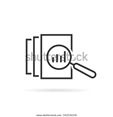 |
| Observe manual tasks | Consult your workers | Review available information | Look for trends |
Observe manual tasks
The most obvious step to identifying hazardous manual tasks is by observing how workers actually perform the task and work assigned to them. Keep in mind that a manual task is hazardous if it involves sustained or repetitive force, high or sudden force, repetitive movement, awkward or sustained posture, or exposure to vibration.
Consult your workers
It is important to gain information from the ones who perform the work first-hand – the workers who carry out the actual work are the most reliable source of information regarding the potential hazards that specific manual tasks can cause. By consulting with them, you will gain a knowledge of the discomfort, aches, and pains they experience in carrying out particular manual tasks. Your knowledge of the different experiences of your workers can aid in developing procedures and processes that will streamline better risk and hazard control measures in the workplace.
Review available information
Accessing and reviewing documentation and records pertaining to workplace incidents and injuries is another way of identifying hazardous manual tasks. These can also be obtained from industry associations, similar workplaces, or safety consultants. Manufacturers, designers and suppliers of the building materials and structure can also provide information about precautions or measures which can help you minimise or eliminate the risks.
Look for trends
The information you have collected from credible and reliable sources may present you with trends about the quantity of hazards linked to a specific task, or the frequency of a particular hazard in certain tasks. Trends may also show that hazardous manual tasks vary across areas and location, which implies a need for changing the layout area or even the method of performing manual tasks.
Control measures of hazardous manual tasks
As previously discussed, you should use the hierarchy of controls to determine the different control measures you can implement in order to minimise, if not eliminate, the risks of hazards in the construction site. The list below shows examples of control measures to help manage the risks involved in accepting and storing delivered materials on site.
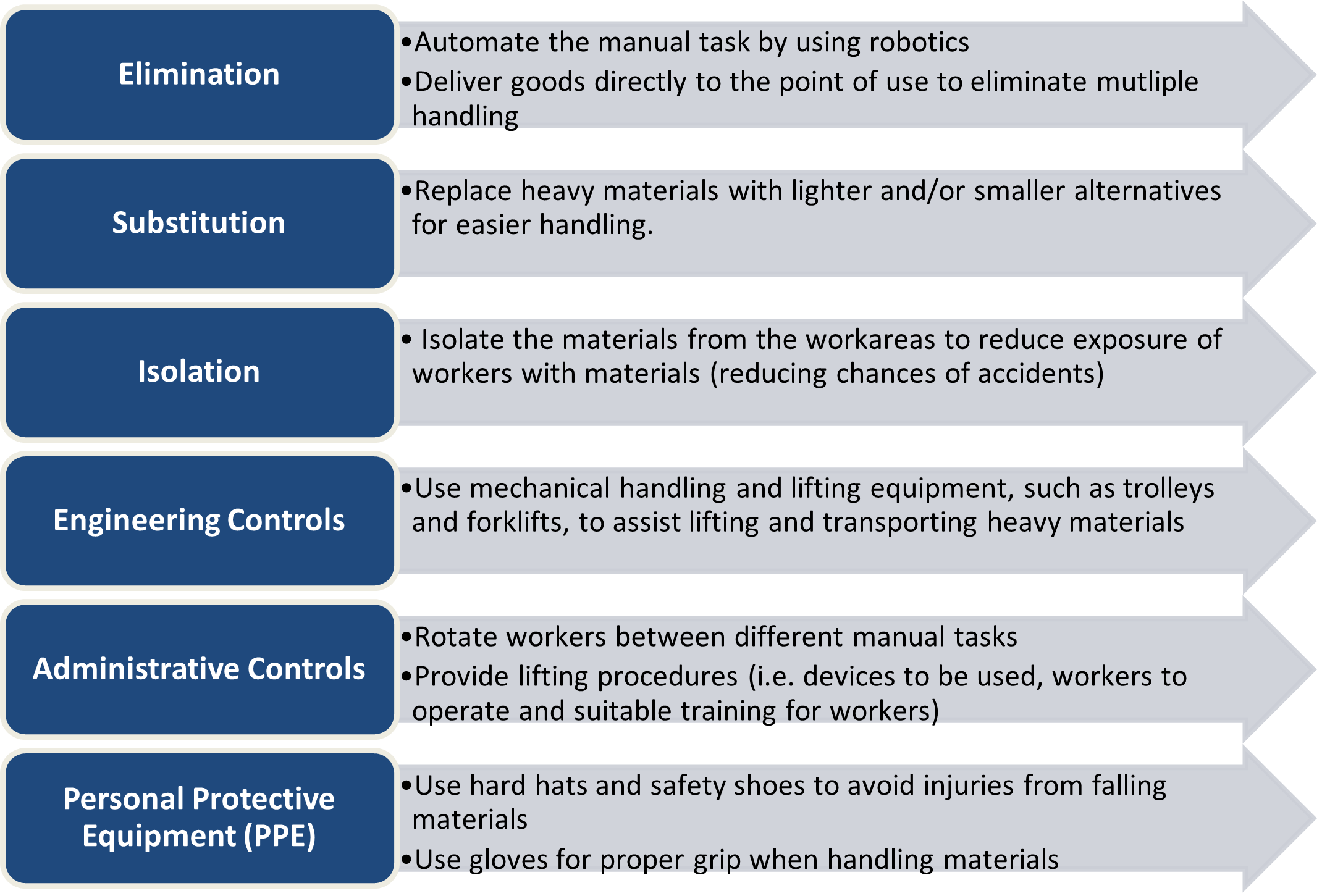
Safety requirements on mechanical material handling
As discussed in the previous section, material handling can also be done using heavy equipment to help workers in accepting and storing materials on site. Examples of these equipment include:
- Forklifts
- Conveyors
- Cranes
- Hoists
Using material handling equipment, though, should be a concern with regards to safety since plant and equipment also bring risks to workers. Therefore, you need to consider workplace safety requirements when exposed to or using mechanical material handling. As part of the construction project, mechanical material handling equipment should undergo the risk management process.
Identifying hazards on material handling equipment
You may apply the methods on identifying hazardous manual tasks to also identify hazards on equipment used in material handling, with additional three more methods to consider specifically for material handling equipment.
Inspect the equipment
You should inspect all the plant and equipment, as well as their parts, and observe how they are operated and maintained. Include the following in the inspection:
- The review of the user manual on features and proper use and maintenance of the equipment
- The consultation with designers, manufacturers, suppliers and other relevant people involved in the use, storage and maintenance of the equipment
- The condition of the equipment (including usage and maintenance history)
- The location of equipment or where the equipment could be used
- The activities involved in carrying out material handling using the equipment
Review incident records and other relevant data and information
Check for incident reports relating to the exposure, use and maintenance of material handling equipment. You can also review use and maintenance logs and inspection reports to see if the plant is in safe working condition. Consulting these documents will help you collect valuable feedback on the hazards present in, or during use or maintenance of, the equipment.
Check common hazards in material handling equipment
Due to the frequent use of material handling equipment in most construction projects, some hazards are consistently present and are easily identified. You can take them into consideration as they are most likely present in your project as well. Common hazards found in material handling equipment can include:
- The equipment itself
- Equipment parts or components (moving parts or damaged/worn-out parts)
- Noise and vibration
- Electrical components
- Structural or mechanical failure
- The work environment and movement of equipment
- Poor traffic management (e.g. moving equipment and pedestrians not segregated)
- Blind spots (due to large size of equipment or load)
- Fast moving equipment or its parts
- Locations of materials delivery and storage
Taking them into consideration will help you further identify the hazards present when near, and when using and maintaining the equipment.
Control Measures of Material Handling Equipment
Again, you should consider the hierarchy of controls to determine the different control measures you can implement in order to minimise, if not eliminate, the risks of hazards when exposed to material handling equipment. The figure on the next page shows examples of control measures to help manage the risks involved in material handling equipment.
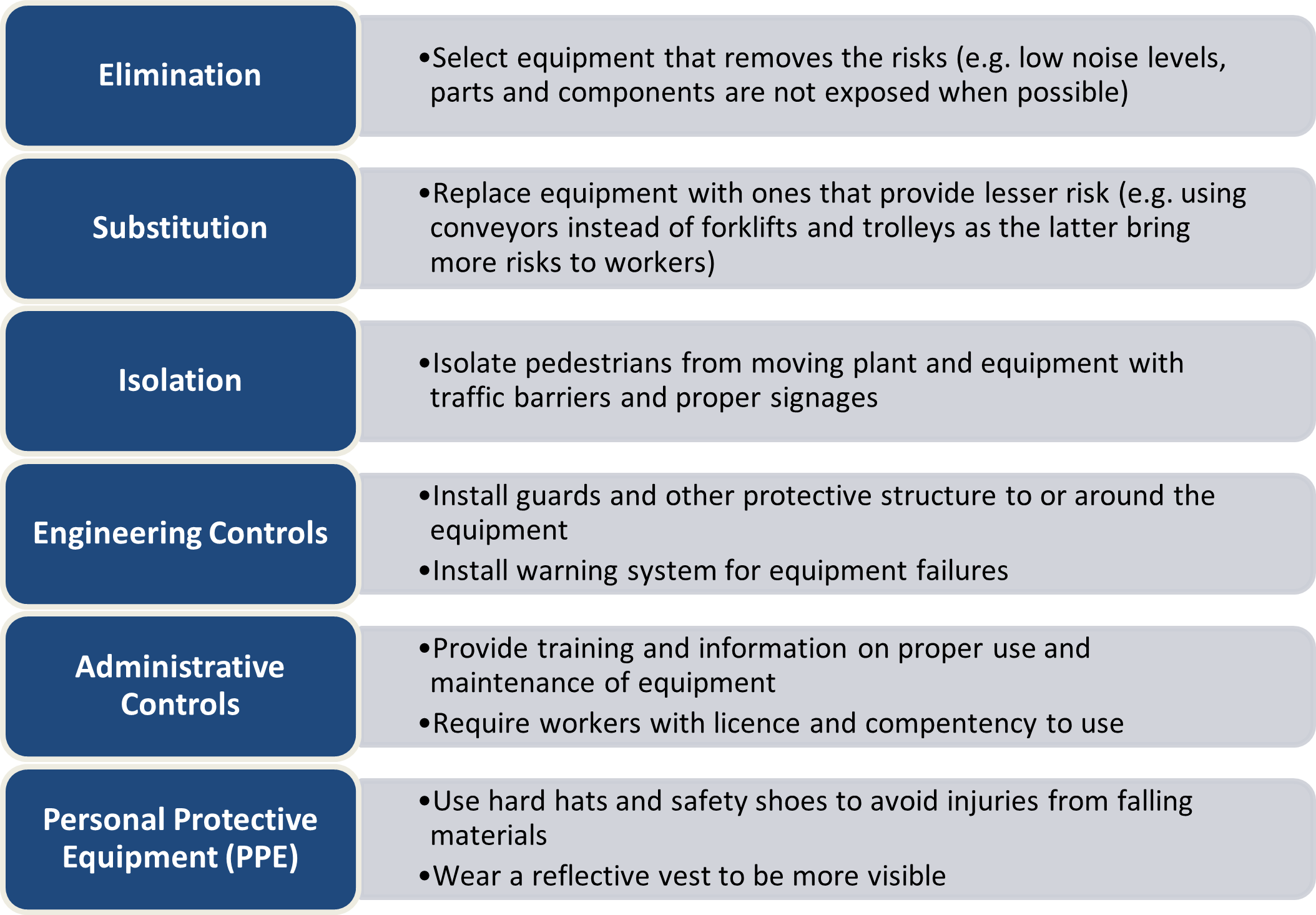
Licensing and competency for operating material handling equipment
Certain material handling equipment require a licence to operate the said equipment as they are considered high risk work. A licence is a permit granted by an authority (in the building and construction industry) to perform certain activities, in this case to be able to operate high risk work equipment. Examples of licences to operate equipment in the context of material handling include:
- Building Licences
- Heavy Vehicle Licences
- White Card
- Licences for High-risk Work
- Licences for Waste Disposal
- Licences on handling, storage and use of hazardous chemicals and substances
Most of the time, to be able to qualify for these licences, you need proof of competency relating to the operation of the equipment. Competency means you possess the knowledge and skills needed to carry out tasks that require licences and that you can apply these knowledge and skills to the standard of performance necessary in your workplace.
Competency can be achieved through completing qualifications from VET courses relevant to the licence you are to obtain. As an example, below lists the relevant units of competency as a qualification for obtaining the licences for operating various material handling equipment. You can access the link to check for the specific requirements to meet.
- Tower Crane: CPCCLTC4001 – Licence to operate a tower crane
- Derrick Crane: TLILIC0007 – Licence to operate a derrick crane
- Materials Hoist: CPCCLHS3001 – Licence to operate a personnel and materials hoist
- Forklift Truck: TLILIC0003 – Licence to operate a forklift truck
- Order-picking Forklift Truck: TLILIC0004 – Licence to operate an order picking forklift truck

As discussed before, you should keep records of the materials arriving at the construction site. This helps track the quality and quantity of materials going in the construction site and assess if there are damaged materials, materials that are inferior to procured material and other variations to the originally specified materials.
Construction inventory list
Once a material is confirmed to be delivered and is to be stored, you need to enter all necessary information into an inventory list. An inventory list is a sheet where all materials delivered, stored and used are accounted for. It is a document you can refer to when you are looking for a specific material for its identification or confirmation.
Some of the details you can include in an inventory list are:
- Date and time of delivery
- Material code and name
- Source of material (supplier)
- Material description
- Purpose/use of material in construction
- Price per unit and total price
- Quantity of materials
- Observation notes (presence of damage, decay, notes on quality and other variations)

Maintaining records
Here are ways to maintain records of deliveries, damaged and inferior materials and variations to specified materials.
Organise information into identifiable categories. Just as the sample inventory list, you need to assign specific information to put to have a consistent quality of information once the list is referred to.
Provide copies of records to other relevant site and project officers. This is to disseminate updated information on the materials being delivered into the site.
Use digital technology and applications to access, extract, integrate and compile information. Nowadays, project and construction management software are used to help consolidate and disseminate project data and information quickly, including materials and inventory management tools. Benefits include:
 |
 |
 |
 |
| Real-time Updates – This allows better efficiency, communication, and collaboration between project managers. | Centralised and Ease of Access – Information is saved in a single storage, where relevant people can access it when needed. Clients and contractors may check progress online and through mobile as well. |
Data-driven Decision Making – Data and information gathered from the inventory system can help make objective decisions on material quality and supply. Data and information gathered from the inventory system can help make objective decisions on material quality and supply. |
Integration – Data from files and other storage can be imported to the software, allowing transition with ease. |

